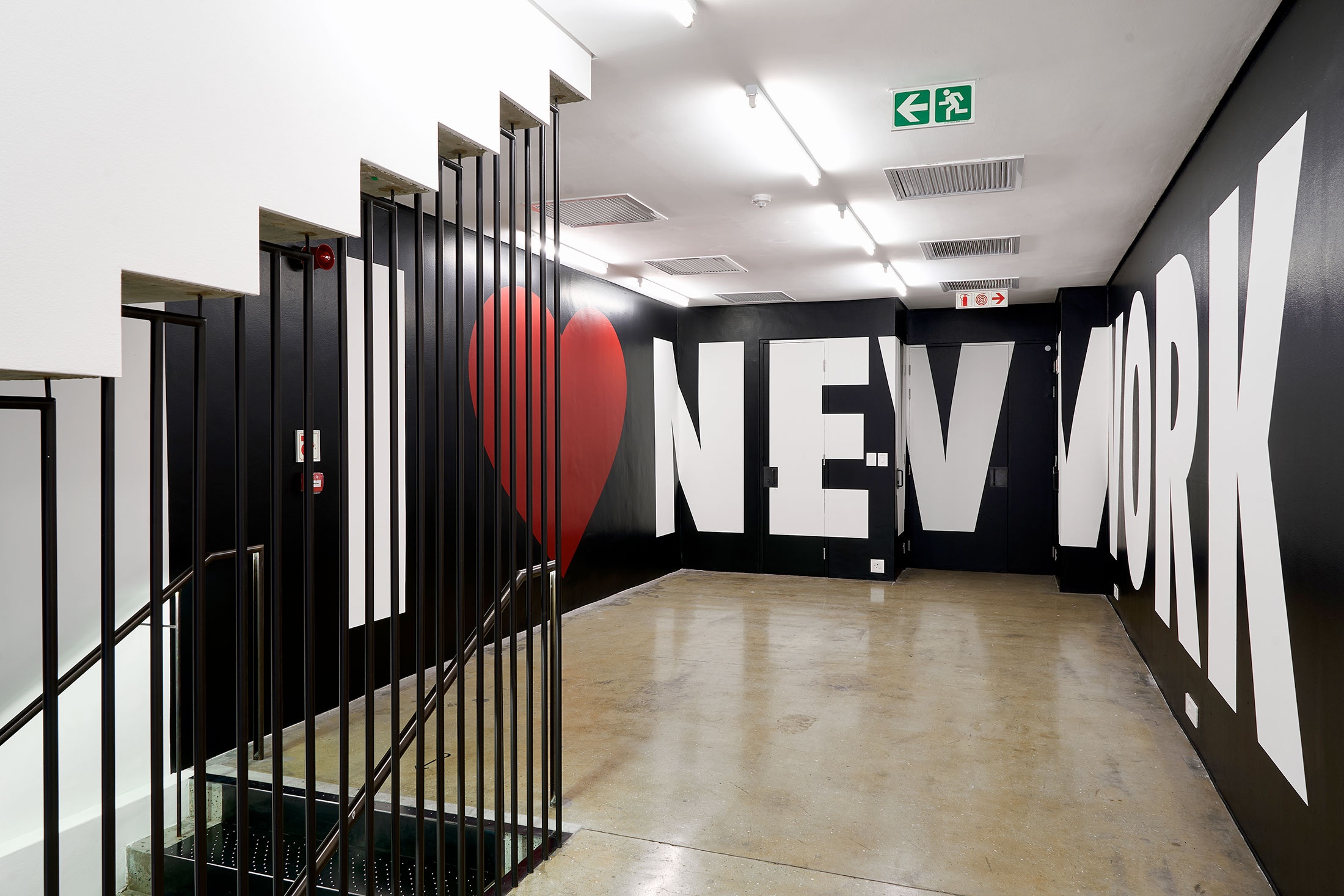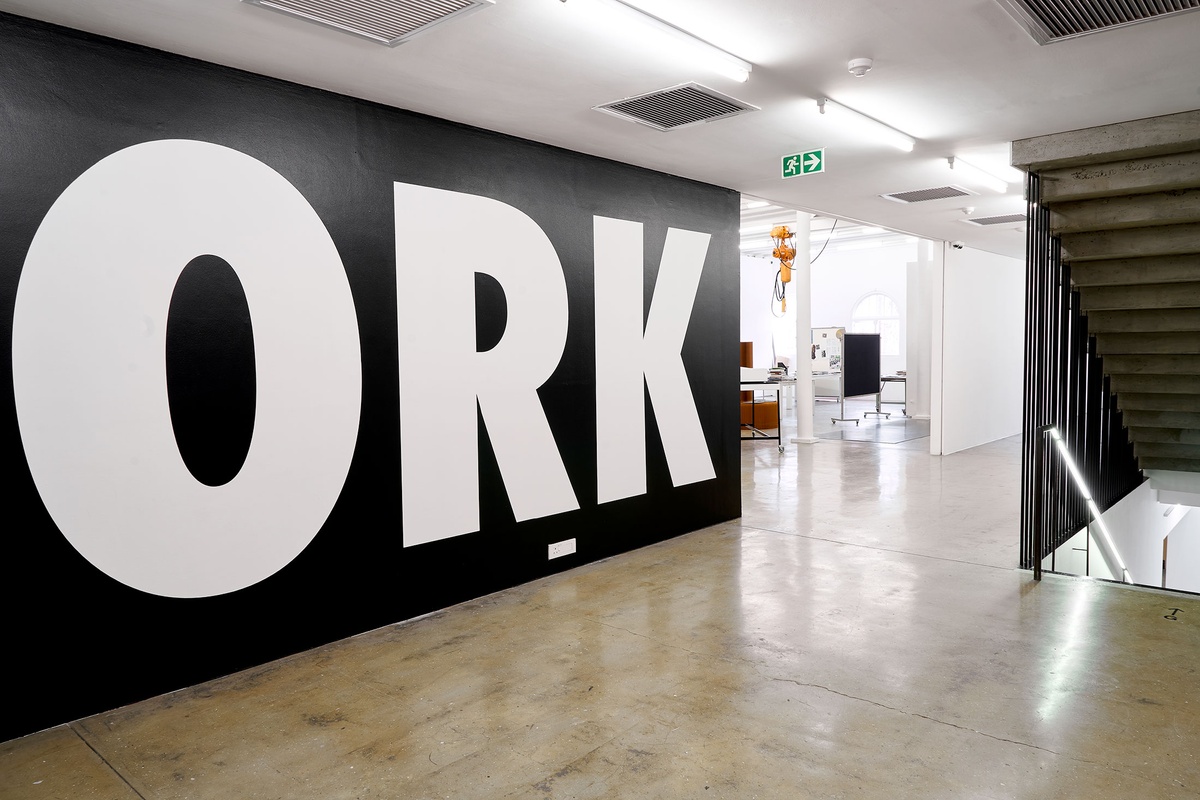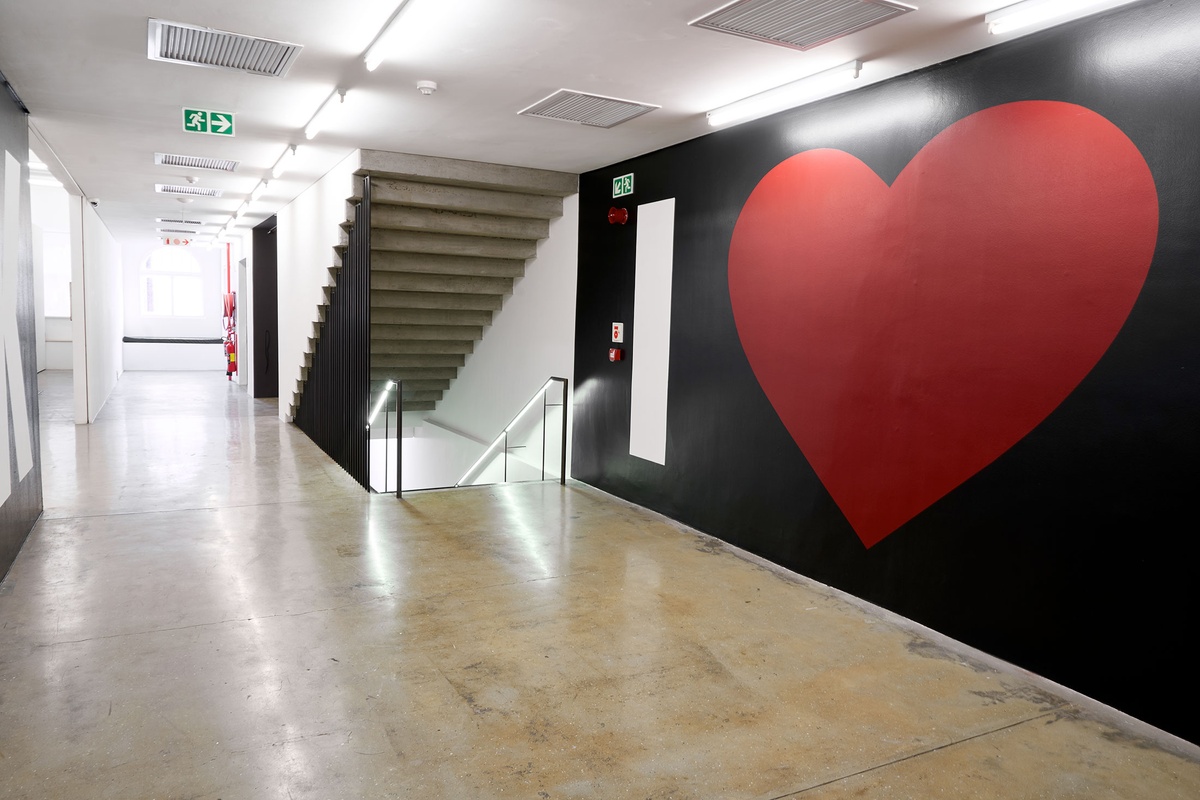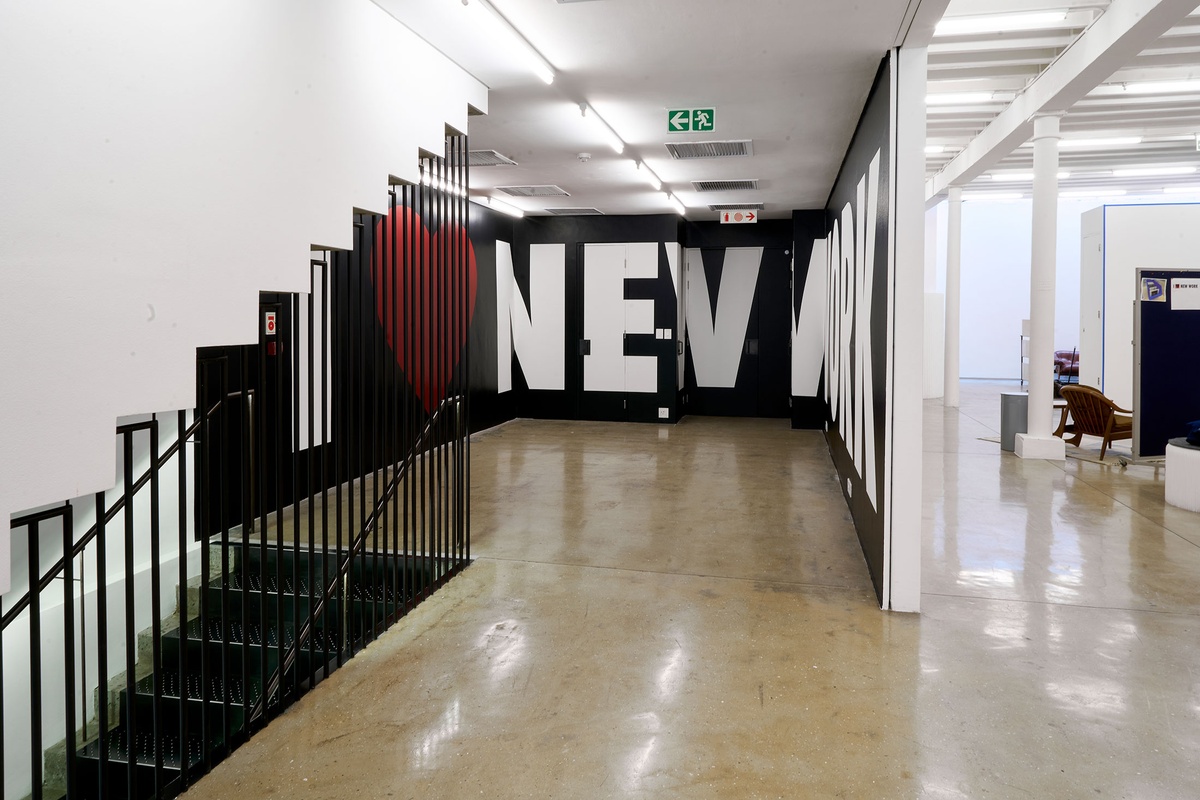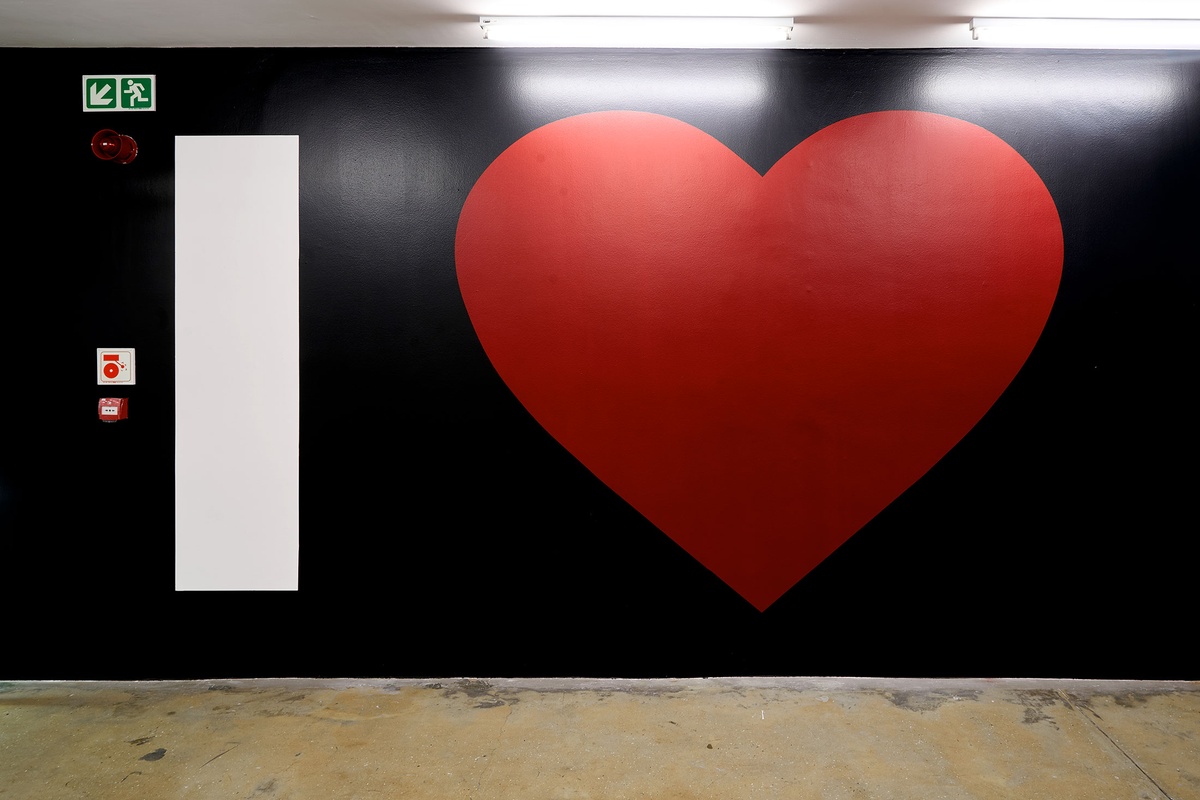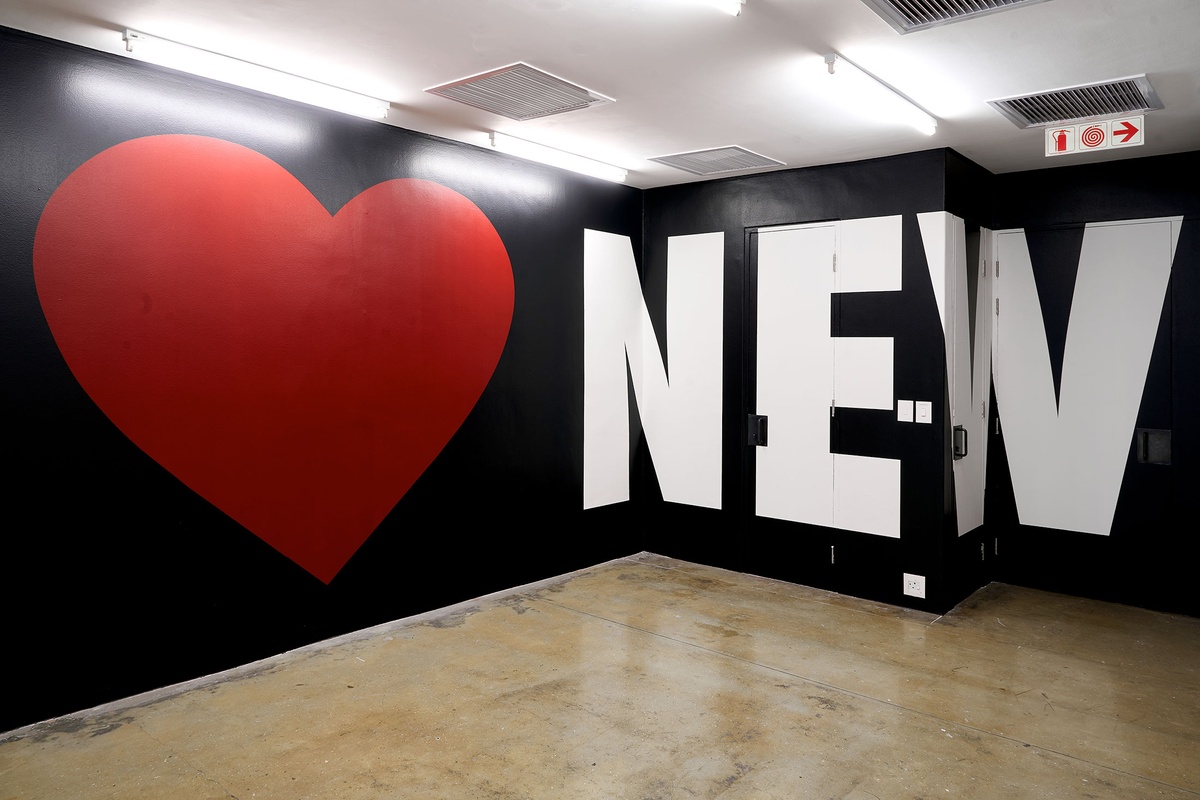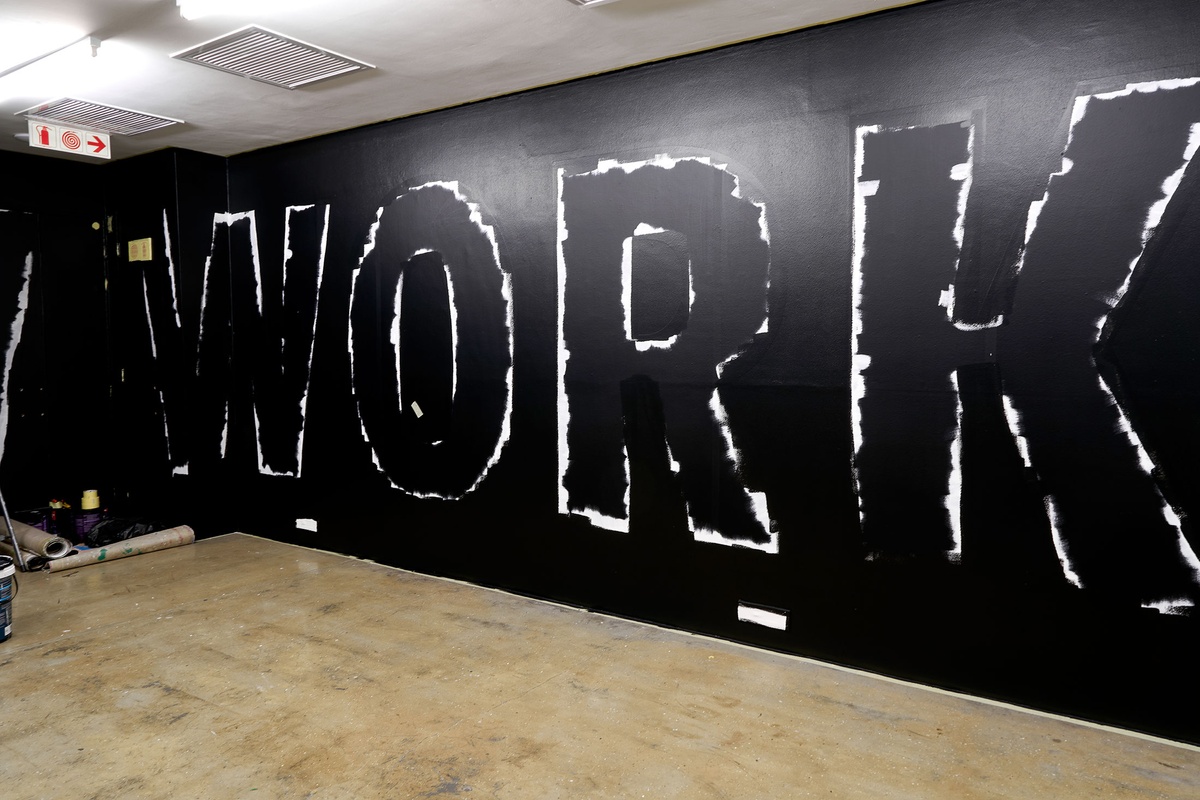Ed Young
I LOVE NEW WORK is an iterative, site-responsive mural in Young’s signature bold sans-serif font. The text plays off the well-worn advertising slogan I Love New York, which has been emblazoned on kitschy trinkets and mass-made garments since the tourist campaign first launched in 1977. Courtesy of marketing firm Wells, Rich, and Greene, whose other successful campaigns include the ambiguous taglines “Plop-plop, fizz-fizz. Oh, what a relief it is!” for Alka-Seltzer and “Flick your Bic” for the eponymous pen, the slogan’s defining feature was the graphic heart used in place of ‘love’ (a device that seems all too pedestrian in the emoji-saturated present). Swapping out the ‘Y’ for a ‘W’, Young’s variation on the theme becomes the motto of freelancers the world over. Included in WORK, I LOVE NEW WORK served as a primer, extending reflections on ‘work’ as both a noun and a verb in an art context – the ‘work of art’ and the work of art workers. Asked about the impulse behind the mural, Young recalled:
It was silly.** **I'm trying to remember now… I think it had something to do with Christian Nerf. We were travelling to New York in about 2008, and I sent him a message, and the predictive text changed it to ‘we're going to new work’ – that kind of thing. Christian made up a little mockup just for fun that said ‘I love new work’. I stole it from him and turned it into a ‘thing’. At the time we were doing a lot of collaboration and stealing. It was around then that I was doing murals, or trying to do more… I mean, I still am. It just came up – there were a few projects that required wall paintings, so it went to a few places. [...] It’s quite ironic that for WORK we’ve used an old work.
b.1978, Welkom
Ed Young established himself as a permanent fixture in Cape Town’s art scene and dive bars after his opening gambit in 2002, which set the tone for his career. Then a recent graduate, Young submitted a local bar owner, Bruce Gordon, to be auctioned at an art school fundraising event. The work, Bruce Gordon (Found Object [concept]), precipitated a bidding war, was purchased for a handsome sum, and later donated to the Iziko National Gallery. Much notoriety has since ensued from his irreverent critique and punk provocations, the artist often casting himself as the butt of the joke. “Young has been celebrated for his inability to adapt and has long since overstayed his welcome," he writes of himself, in the third person.
For the past ten years, Young’s work has loosely followed two forms: text-based prints, murals and billboards, and hyperreal, sculptural self-portraits. A third mode remains central to his artistic process and persona – that of performance. More often unannounced and understated, both durational and discrete, these gestures asked after “the question of how much work is work,” as Young said in conversation with Josh Ginsburg and Khanya Mashabela during WORK, a process project in A4’s Gallery. To this, he said of his collaborative friendship with Christian Nerf: “Like everything we were doing then, we were always trying to frame it as an artwork. It was a strange way of living.” He continued –
[W]henever I was in a new country I would go and find a karaoke bar and sing one specific song to an audience of none. That performance, that gesture, was constantly ongoing. For me, that work worked because no one knew about it, but I had to keep it in the same kind of vein, keep it consistent […] At the time, I was doing a lot of performances about doing nothing. While I was sitting with a bunch of students at Michaelis, I began thinking about what the most minimal and most effective gesture could be. I was still teaching – I think it was a performance elective. I would say to the students that for me, the ultimate performance would be to be invited to an international show to go to drink the wine, to be a spectator but to also be a performer, 'do nothing', and then to come back home. I did that a few times and people thought that was good. […] For me at the time, that was the ultimate work, the least amount of effort to do a very important thing, in my mind – probably not in other people’s minds. The thought was: when does the least become the most? And when does it become labour?
Parallel to this practice, Young is a founding and managing director of Eh!woza, an NPO that engages high school learners and young adults in areas affected by high rates of HIV and TB. “Equipped with accurate information,” the website reads, “beneficiaries are enrolled in creative workshops that provide technical skills, equipment, and conceptual guidance to produce documentaries, music, poetry and music videos that reflect the individual, social, and emotional cost of disease.”
